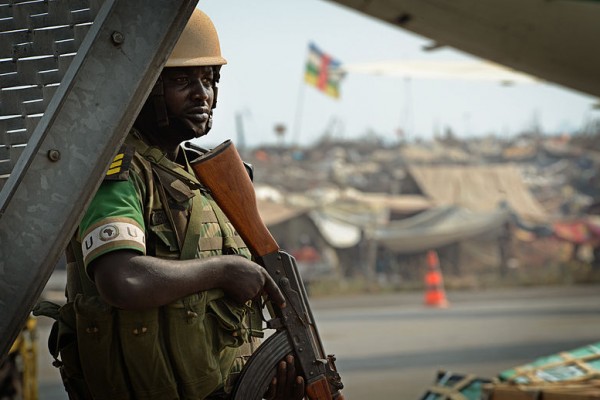On 17 February, the people of Kosovo celebrated the fifth anniversary of their 2008 declaration of independence. Yet, their country remains in a state of international legal limbo, unrecognized by almost half of the members of the United Nations- including five members of the EU- and unable to join many international organizations. Currently, talks between the government of Serbia, which continues to claim Kosovo as a province, and the government of Kosovo are underway. The EU facilitated discussions have little chance of working out basic issues, let alone coming to a final settlement on this issue of Kosovar independence. Serbia rejects any claims to Kosovo’s independence, while Kosovo’s government demands nothing short of full recognition of independence by Serbia. Russia, China and much of the Global South support Serbia, while the United States and much of the West back Kosovo.
Once the heartland of Serbian culture, Kosovo was largely depopulated and resettled by the Ottoman Empire with Muslim Albanian migrants during the 15th century. It was reintegrated into Serbia under both iterations of Yugoslavia while being granted some cultural and political autonomy. During the breakup of Yugoslavia in the 1990s, Serbian nationalists seized power in the rump Yugoslavia and revoked this autonomy, empowering the local Serb minority. Resistance to this mounted, first non-violent and later armed warfare under the banner of the Kosovo Liberation Army (KLA).
In 1999, following the expulsion of Serbian troops by NATO bombing, ethnic Albanian Kosovar resistance and extensive diplomatic pressure; Kosovo gained a form of vague quasi-sovereignty. It was under official UN administration through UNMIK, with a NATO military mission, KFOR, maintaining the peace; still, it formally remained part of Serbia. Kosovo remains a weak state, with huge amounts of corruption and crime. Anumber of members of the political elite, formerly resistance leaders, are suspected of being actively involved in organized crime.
In Serbia, the Kosovo War indirectly led to the destruction of Slobodan Milosevic’s dictatorship, while the issue of Kosovo continues to be a sore on the Serbian body politic. Serbs wholeheartedly reject Kosovar independence, and de-jure recognition of Kosovo is a political “third rail”. In order to assert their sovereignty, Serbia blocks movement of Kosovar goods through their territory and supports an independent administration in majority-Serb North Kosovo, which runs the area without input from the Kosovar capital Pristina. The latter has proved a to be flashpoint, with periodic violence erupting between Serb and Albanian Kosovars.
Efforts to solve the deadlocked crisis have received their primary impetus from Europe, which has made forward movement on the Kosovo issue a condition for forward movement on Serbia’s wishes to begin accession talks to the EU. The first major, comprehensive plan was the Ahtisaari Plan, with negotiations beginning in 2005. It envisioned a multiethnic, decentralized Kosovo, recognized by Serbia, with a continued international presence to maintain regional security. This plan was largely embraced by Kosovo but was rejected by Serbia, which firmly refused to directly recognize Kosovar independence at any time and demanded further protections of the self-determination of Serbs in Kosovo along with protection of Serbian historical and religious sites. The Ahtisaari Plan remains the framework for any current proposals under consideration.
A number of other possible solutions have been floated. One option is partition. The section of Kosovo north of the Ibar River, with its majority-Serbian population and majority of the historical sites and monasteries, would become part of Serbia. In exchange, Serbia would recognize Kosovo’s independence, either tacitly or officially. In some iterations of the plan, Kosovo would also receive the Presovo Valley, a majority-Albanian region of Serbia. This possibility has the advantages of being relatively simple and is seen by most Serbs as acceptable. The disadvantages are that any partition line will be contentious and likely lead to violence, and that Kosovars largely reject this. The idea has been widely denounced by most actors, although it retains popularity among some important former diplomats, and is supported by the current prime minister of Serbia, Ivica Dacic.
Another option, proposed by former President of Serbia, pro-European Boris Tadic, as part of his 2011 “Four-Point Plan”, is the establishment of an autonomous Serbian region within Kosovo. This region would have largely independent self-government over the country’s Serbs centered in the North Kosovo region, in exchange for Serbian recognition. This has the advantages of being largely an institutionalization of the status quo, and is a middle ground between partition and outright independence. Its disadvantages include the ability for the autonomous region to act as a proxy for Serbia’s interests, allowing them to interfere in Kosovo’s politics, as well as being complex and potentially unstable. It is also rejected as insufficient by both sides, and by international mediators.
Despite the large number of potential plans, the significant pressure from Europe and the clear benefits to all sides of a solution, the future does not look bright. Serbia has swung back to the nationalist right with the election of Tomislav Nikolic as President. Kosovo will have divisive elections this year, with concerns about potential fraud and unrest. With crisis in the EU and an apparent rollback in the pace and progress of European integration, the prospect of a deal seems far away. Yet, as meetings continue to be held in Pristina, a solution should be found, and all options considered. Peace, prosperity and co-operation could use a boost right now.
By Alexander Langer


